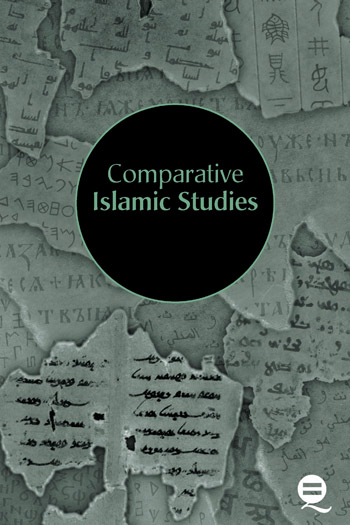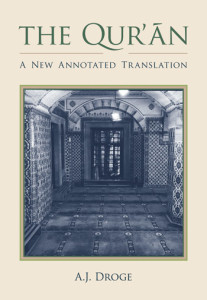Reviews
New Books Network
interview with authorEuropean Academy of Religion
YouTube presentation 2019This is an ambitious book that asks trenchant questions about Qur’ānic interpretation in the contemporary world. Given the massive production of such texts around the globe in the past two decades, it is a very welcome and much needed contribution to the field of Qur’ānic studies. It is to be praised for its breadth in that it explores a broad array of interpretations in various geographies, languages, and media, providing – better than any other book – a map of the very terrain of recent Qur’ānic exegesis as well as an incisive examination of the debates, traditions, and power-structures that shape it. Without question, this book will be an invaluable resource for scholars, students, and curious minds for years to come.
Brett Wilson, Associate Professor of History, Central European University
Expansive, rigorous, and compelling new book on the development and contours of contemporary Muslim interpretations of the Qur’ān.
Scholars who teach on modern Islam and the norms of contemporary Muslim piety and practice – liberal to conservative, progressive to extremist – will benefit considerably from this book’s incisive, fresh, and highly readable explication of how contemporary norms around Qur’ānic interpretation have developed, and what impact these developments have had and continue to have. Pink’s work is particularly important for scholars whose research and teaching focuses on intersections between modern media forms and Qur’ānic interpretation, whether through the lens of media history or a digital religion. This book will also work well for teaching. Although the prose is scholarly, the language is clear and lucid, making it an easily intelligible and compelling read. While the nuanced arguments of some chapters will remain opaque to undergraduate students or others with no exposure to Islamic studies, many chapters could be easily and productively incorporated into courses for non-specialists – for example, into the contemporary section of an introductory course on Islam, into a course on Islamic fundamentalism, or into a course on Muslims in Europe, as well as more obvious options like a course on Qur’ān and ḥadīth or on Islam and media. In short, this book is a revelation in itself: broad in scope, bold in its arguments, comprehensive in its evidence, and a pleasure to read.
Review of Qur’ānic Research
Pink has produced a fine new study in the field of contemporary Qur’ānic exegesis. It is an irreplaceable resource for scholars and students on Qur’ānic studies.
Islamochristiana
Johanna Pink’s work on the present scenario of Qur’ānic studies is both informative and wide-ranging. This rigorously analytical and well-presented work provides an excellent opportunity to learn about the many, varied contours of current Qur’ānic scholarship.
The Muslim World Book Review
Muslim Qurʾānic Interpretation Today has many excellent qualities. Pink’s critical eye ranges over material in several of the major languages used for contemporary exegesis in the Muslim world and in a vast array of registers, from cartoons and blog posts to multi-volume tafsīrs and academic monographs. This review has only been able to touch on some of the authors, works, and positions studied in the book, which truly is a global snapshot. Moreover, Pink maintains an admirable level of clarity and analytical precision in expressing the various positions she investigates. She addresses the main issues, outlines them clearly and, to the mind of this reviewer at least, almost always puts her finger on the key questions at stake.
Journal of Qur’anic Studies
Johanna Pink has published an important monograph, one that will serve as our new guide to the study of contemporary commentary as a globalized endeavor.
Religious Studies Review
Muslim interpretation of the Qur’an Today is a significant contribution to the developing subject of Qurnic studies, which has grown as a lively field of inquiry around the world. The work deserves to be recognized for providing us with a good number of case studies from various geographies and time periods, as well as for doing an admirable job of studying various factors that play a role in contemporary Qur’anic exegesis, such as media, genealogy, and interpretive community. Scholars teaching on modern Islam and the norms of contemporary Muslim piety and practice – from liberal to conservative, progressive to extremist – will benefit greatly from this book’s incisive, fresh, and highly readable explanation of how contemporary norms around Qur’anic interpretation have developed, and what impact these developments have had and continue to have. Pink’s work is especially essential for scholars whose study and teaching focus on the intersections between modern media forms and Qur’anic interpretation, whether viewed through the perspective of media history or a digital religion. This book will also be useful in the classroom. Despite the intellectual nature of the prose, the language is simple and lucid, making it an easily understandable and interesting read. While the nuanced arguments of some chapters will remain opaque to undergraduate students or others with no exposure to Islamic studies, many chapters could be easily and productively incorporated into courses for non-specialists, such as the contemporary section of an introductory course on Islam, a course on Islamic fundamentalism, or a course on Muslims in Europe, as well as more obvious options such as a course on the Qur’an and hadith or on other courses on Islam and Muslims. In short, this book is a discovery in and of itself: broad in scope, daring in its claims, exhaustive in its evidence, and a joy to read.
Religion








